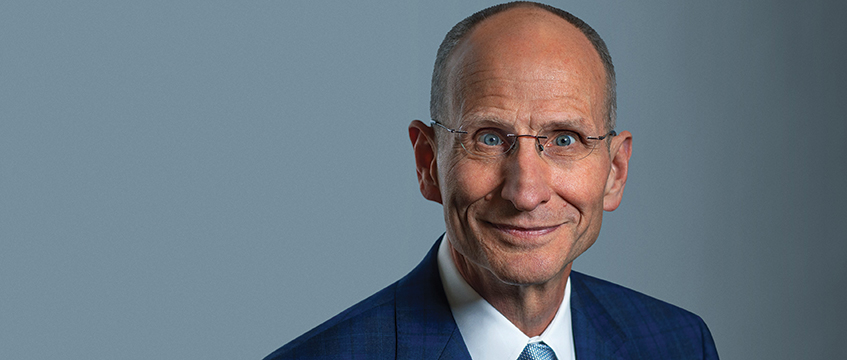Landsec finds a focus on flex as Myo expands
More than six years after launching flex office brand Myo and as it prepares to open its largest site yet, the team at Landsec has grown and learnt a lot about the sector. But the business’s approach remains selective, focused and simple, said Natasha Morris, the REIT’s director of flex office.
“Our purpose is delivering the best workplace experience,” Morris told Estates Gazette. “What we want to do is deliver flex space into the right buildings in the right locations that are really meeting customer demand.
“That is the measure of our success. Within that we will have well-let buildings, with very happy customers, with high renewal rates and a great customer experience – all of those collectively add up to a great business.”
More than six years after launching flex office brand Myo and as it prepares to open its largest site yet, the team at Landsec has grown and learnt a lot about the sector. But the business’s approach remains selective, focused and simple, said Natasha Morris, the REIT’s director of flex office.
“Our purpose is delivering the best workplace experience,” Morris told Estates Gazette. “What we want to do is deliver flex space into the right buildings in the right locations that are really meeting customer demand.
“That is the measure of our success. Within that we will have well-let buildings, with very happy customers, with high renewal rates and a great customer experience – all of those collectively add up to a great business.”
Spatial awareness
Myo is preparing to open its seventh and largest flex hub this summer – an 80,000 sq ft workspace just across from King’s Cross station at 42-50 York Way, N1.
Alongside its Bankside, Liverpool Street, New Street Square, Piccadilly, St Paul’s and Victoria Street locations, the building reinforces the company’s attitude to site selection as well as connectivity and amenity.
“We’re trying to put as much on site so all of your needs within the day are met,” said Morris. “If you’re in a vibrant location, where you can really engage with the best parts of the city, that’s what occupiers want for their teams when they’re bringing them into the office.
Myo’s buildings offer everything from quiet work space to auditoriums for events. “Our view is we should be providing any space the customer needs for them to do their business,” Morris said. “If they need event space, we don’t want them to go externally, we want to be able to provide that for them.”
And the team wants the workspace to be a far cry from what Morris calls “that kind of awful mental image you might have of the office” with row after row of desks. “[That’s] something the Myo brand has always stood away from,” she added. “We were born from Landsec, where the traditional customer has an expectation of premium workspace.”
Indeed, Morris said Myo has learnt that sometimes foregoing desks altogether can actually be the better option.
Familiar faces
Over time, Morris said the company’s understanding of its clientele has also grown.
“It’s challenging my preconceptions of who was in it [flex]…” she said: “What’s interested me has been the diversity of the industries that use it.”
That customer base includes AI and tech start-ups, but also wealth management, healthcare and even large global companies. “Perhaps they just need a small office in the UK, in London,” she said. “They don’t need to grow. They need a presence here and they only need 20 to 30 desks.
“But they’re a global business and they’re not going to be in some small suite above Costa on Cheapside. They want to be in a big building with everything that comes with that.”
Some have also decided that the benefits go beyond flexibility. “Around 40% of our customers have moved from traditional into flex,” Morris said. “I don’t think there’s going to be a mass exodus from traditional, but there’s some occupiers for whom it really does deliver on things that they need that go beyond flexibility.”
Morris said customers appreciate the ability to be able to work in communal spaces alongside other customers.
“You don’t necessarily have to have an in-depth chat with people, you just need someone to say hello to or have those interactions… It’s like that thing of going and working in a café so you’ve got people chatting in the background or if your office is too quiet.
“I think it’s a really good way of creating an environment that perhaps feels less lonely or less pressured… It’s not overwhelming. It’s there to partake if you want it.”
Image from Landsec/Myo











